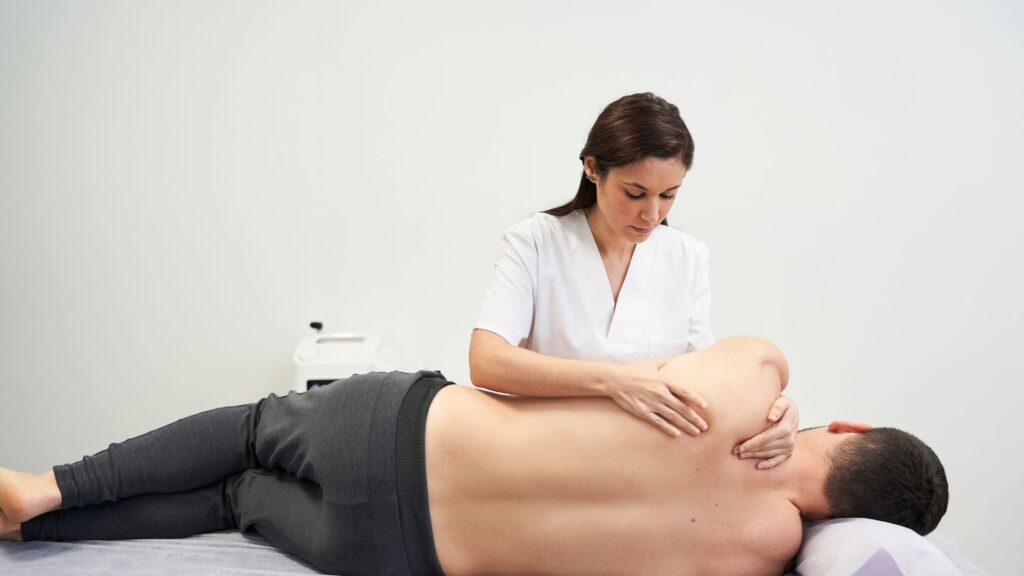
If you’ve ever felt back or neck pain fade after rest — only to have it creep back again a few days later — you’re not alone. Recurring aches are one of the most common reasons people visit Family Chiropractic of Clark.
The culprit is often posture strain: the stress your spine and muscles endure when held in awkward or unbalanced positions for too long. While the ache may ease temporarily with rest or medication, the pain usually returns because the root cause — posture — hasn’t changed.
The good news? With awareness, small adjustments, and targeted chiropractic care, you can break the cycle and protect your spine.
Why Does Posture Cause So Much Trouble?
Your spine is designed with natural curves that absorb shock and keep your body balanced. When posture is neutral, muscles and joints share the workload evenly. But when you:
- Slouch at your desk,
- Look down at your phone for hours,
- Cross one leg habitually, or
- Carry heavy bags on one shoulder,
… you force certain muscles to overwork while others weaken. Over time, this imbalance leads to:
- Tight, sore muscles,
- Stiff joints,
- Misalignments that irritate nerves,
- Fatigue and even headaches.
That’s why pain seems to “keep coming back.” Without correcting posture, the cycle continues.
Common Signs of Posture Strain
Not all posture issues are obvious. Look for these telltale signs:
- Frequent neck or shoulder aches after computer use.
- Low back pain after long drives or standing still.
- A “heavy head” feeling at the end of the day.
- One shoulder sitting higher than the other.
- Clothes fitting unevenly (shirts twisting, bra straps slipping).
Why the Ache Returns
Think of posture strain like a “leaky faucet.” You can mop the floor every day (rest, ice, pain relievers), but until you fix the faucet (your posture habits), the water will keep pooling.
Short-term relief doesn’t reset how your spine holds itself. That’s why the pain often reappears in the same spots.
How to Break the Cycle of Posture Pain
1. Reset Your Workspace
- Keep screens at eye level.
- Use a chair with lumbar support.
- Keep feet flat on the ground.
- Avoid leaning into your desk.
2. Move Every 30 Minutes
Sitting is the new smoking — at least for your spine. Stand, stretch, or walk briefly to reset your muscles.
3. Strengthen Postural Muscles
Core stability and upper back strength prevent slouching. Simple daily exercises like planks, chin tucks, or wall angels can help.
4. Be Mindful of Tech Neck
When texting or scrolling, bring your phone up instead of dropping your head down. A 15° forward tilt can double the load on your neck muscles.
5. Use Sleep to Recover
A supportive mattress and pillow help your spine restore overnight. Sleeping on your stomach often worsens posture strain.
The Role of Chiropractic Care
Even with good habits, years of posture strain can leave joints stiff and muscles imbalanced. Chiropractic adjustments help by:
- Restoring mobility in locked joints.
- Relieving nerve irritation from misalignments.
- Balancing muscle tension on both sides of the spine.
- Guiding personalized posture plans so changes stick.
This combination not only relieves pain but also prevents it from returning.
When to Seek Professional Help
Don’t wait until the ache becomes constant. It’s worth getting checked if:
- Pain keeps coming back in the same spot.
- You notice tingling, numbness, or weakness.
- Headaches are frequent at the end of the day.
- Your posture looks uneven in the mirror or photos.
Early care prevents chronic patterns from setting in.

Final Thoughts
Posture strain is one of the most overlooked — but fixable — causes of recurring pain. By making small adjustments in how you sit, stand, and sleep, and by pairing those habits with chiropractic care, you can finally break the cycle and keep the ache from coming back.
At Family Chiropractic of Clark, we help patients identify their unique posture triggers and build long-term strategies for comfort and strength.
👉 Don’t let posture pain keep returning. Schedule your visit today and take the first step toward lasting relief.
